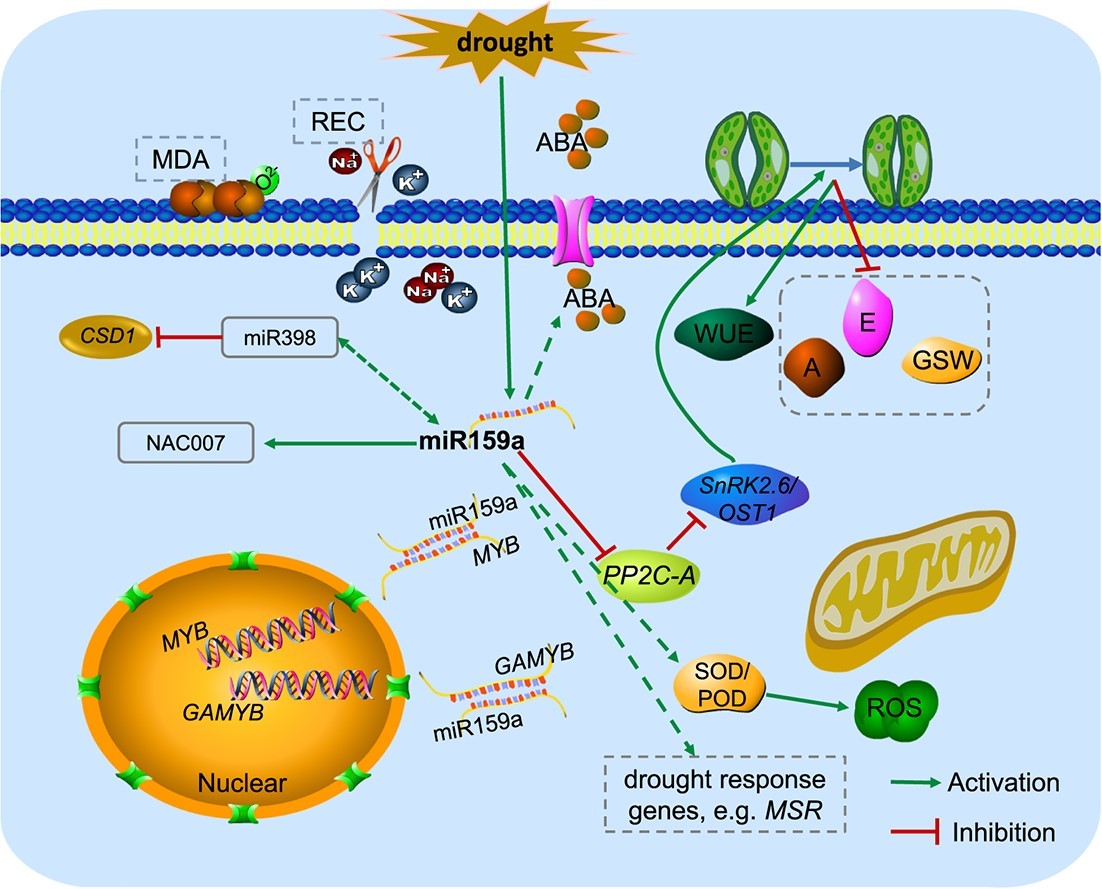Drought stress poses a severe threat to plant growth and agricultural productivity globally. As climate change accelerates, there is an urgent need to develop crops and tree species with enhanced drought tolerance. MicroRNAs (miRNAs), small non-coding RNAs, are crucial in regulating plant stress responses, including drought. Despite their importance, the specific role of miR159a in woody plants, particularly its function in drought resistance, has remained largely unexplored, highlighting the necessity for further investigation.
Researchers at Beijing Forestry University published their findings (DOI: 10.1093/hr/uhad221) on November 7, 2023, in Horticulture Research. The study focused on miR159a’s role in poplar’s response to drought. Through the use of transgenic poplar lines overexpressing miR159a, the team demonstrated that miR159a significantly reduces stomatal aperture and enhances the scavenging of reactive oxygen species (ROS) under drought conditions. These findings establish miR159a as a pivotal regulator of drought tolerance, paving the way for the development of drought-resistant poplar varieties.
The study found that miR159a expression is upregulated in poplar during drought stress. Overexpression of miR159a led to a reduction in stomatal openness, increased water-use efficiency, and expanded xylem vessels, improving water transport. Additionally, transgenic lines exhibited superior ROS scavenging capabilities, with elevated levels of antioxidant enzymes such as superoxide dismutase (SOD) and peroxidase (POD), which mitigate oxidative damage. These physiological adaptations collectively enhance the drought resilience of miR159a-overexpressing poplars.
“miR159a is crucial for managing drought responses in poplar, a valuable model species with significant economic importance,” said Professor Yanwei Wang, a lead author of the study. “Our research sheds light on the molecular mechanisms underlying drought tolerance, offering new avenues to breed resilient tree species and address the mounting challenge of water scarcity in forestry and agriculture.”
This research offers a promising approach to bolstering drought resistance in forestry species. By targeting miR159a, it is possible to engineer trees with improved water-use efficiency and drought resilience, contributing to sustainable forest management. These findings are part of a broader effort to adapt forestry and agriculture to climate change, ensuring the sustainability of vital ecosystems in the face of evolving environmental pressures.
###
References
DOI
Original Source URL
https://doi.org/10.1093/hr/uhad221
Funding information
This work was supported by the National Natural Science Foundation of China (32371577), the Beijing Natural Science Foundation (6232030) and the Major Project of Agricultural Biological Breeding (2022ZD0401503).
About Horticulture Research
Horticulture Research is an open access journal of Nanjing Agricultural University and ranked number two in the Horticulture category of the Journal Citation Reports ™ from Clarivate, 2023. The journal is committed to publishing original research articles, reviews, perspectives, comments, correspondence articles and letters to the editor related to all major horticultural plants and disciplines, including biotechnology, breeding, cellular and molecular biology, evolution, genetics, inter-species interactions, physiology, and the origination and domestication of crops.
